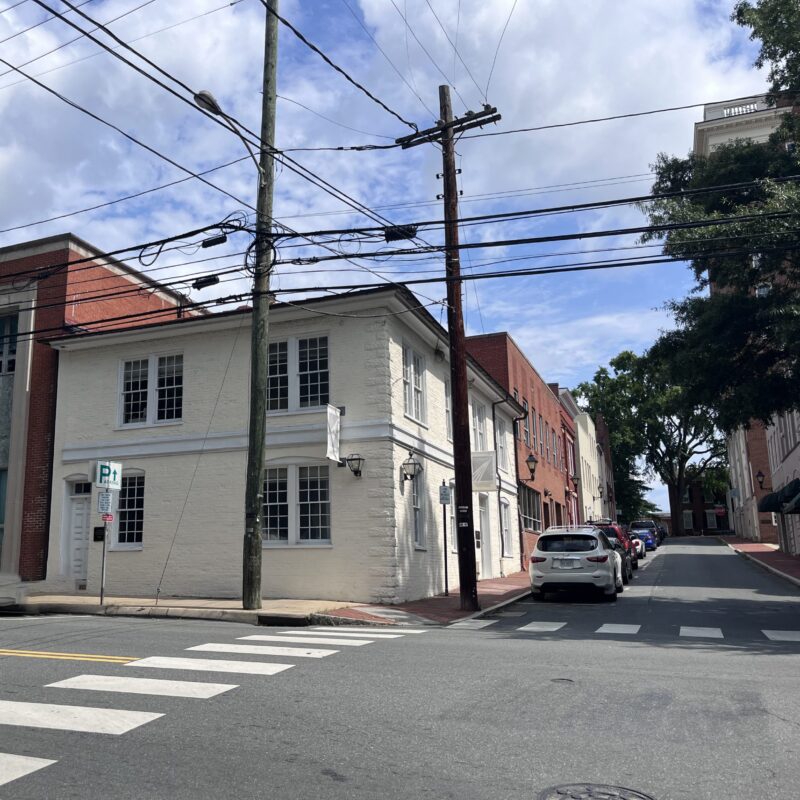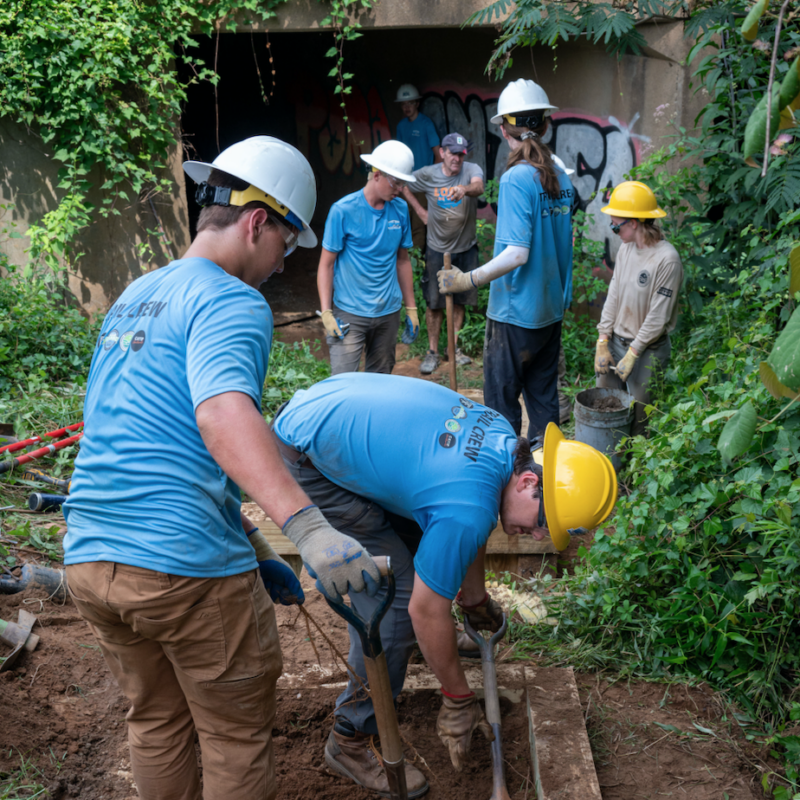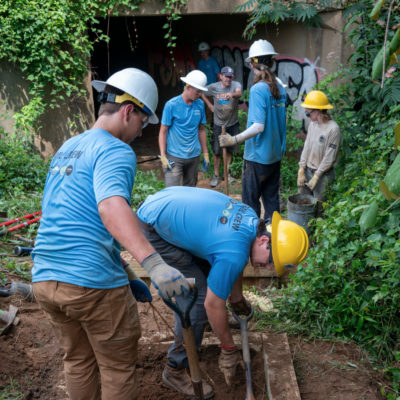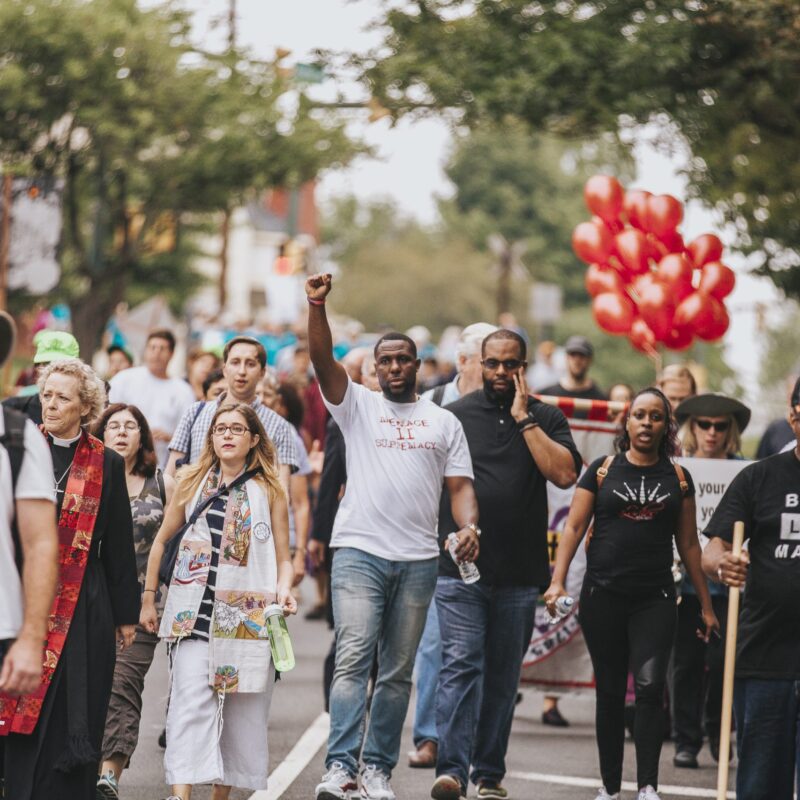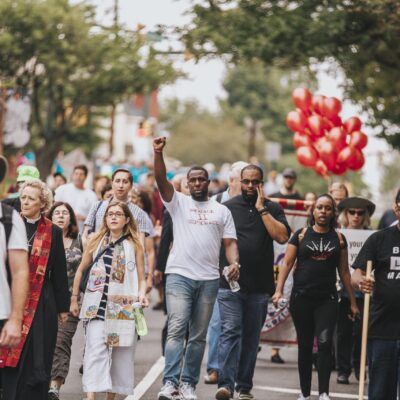In the early ‘80s a class of fifth graders from Stonewall Elementary School in Clear Brook, close to Winchester, took a field trip to White Post Restorations, a car restoration shop in White Post, Virginia. On that afternoon, the kids looked inside some of the most specialized and elite cars ever designed—Bentleys, Rollses, Jags. But for Kenny Shreves, it was more than that: Amidst the pistons and engines, he saw his future. From inside the crowded yet pristine workshop on East Market Street where Shreves now surrounds himself with Porsches in various states of rebuilding, he remembers that moment when, as an 11-year-old, he first ventured, in his imagination, from the familiar surroundings of his Winchester home to his life as a car racing go-to guy. One car in particular sealed the deal: a late 1970s Group 44 Jaguar. That killer machine with a big turbo engine, big wheels and teardrop cockpit “was the coolest thing in the world,” he says. “Seeing something like that at the time was the equivalent to seeing a space shuttle.”
Shreves, now 37 years old, currently divides his time between prepping average Porsches for the racetrack and serving as assistant crew chief for an American Le Mans Series championship team. And though he is shy, his reputation precedes him. Oliver Kuttner, a racecar enthusiast who has done business with him since Shreves was 19, says, “This is not somebody who brags about what he does. But he is very, very good.”
 |
Werkstatt, the car-rebuilding business that Shreves owns with Scott Leopold, is the only Porsche performance shop in the area, and by all accounts, it’s Shreves’ second home. Behind its unassuming exterior, a small, white wooden door with a green Werkstatt logo taped on it, lie the gates of paradise for car racing enthusiasts. Shiny Porsches are crammed inside, each with its own tract of counter space where engines and auto body parts are scattered in a curiously tidy manner. Not one screw, bolt or fiberglass mold is out of place.
Read on: |
Framed pictures of racecars that Shreves has worked on decorate the white walls, as do early artistic masterpieces by his two young sons. “People hire me because I’ve been doing this longer than most people at the highest level, literally at the highest level of Porsche racing,” he says.
Shreves may be the local king of car racing, but the accolades and thrills come with a price. Shreves hasn’t had a day off in more than a month, and the time he does take off is usually dedicated to prepping for a race by traveling to meet with the crew. These days, what’s keeping an already busy man even busier? The chance of a lifetime: to craft and mold a Ford GT prototype, owned and driven by Tim Pappas, a Boston-based entrepreneur. When we spoke, dominating the middle of Shreves’ garage, the car’s black frame, with blue and green body molds hanging off of it, looked Warholish in texture and Cubist in design.
Black Swan Racing’s Doran Ford GT, with Falken tires, entered the racing circus in mid-season to compete in the GT-2 class that currently overflows with Ferraris and Porsches. The car debuted in Lime Rock Park, an auto racing circuit in Lime Rock, Connecticut, in July. “We have been racing and testing it ever since,” says Shreves. The team’s hope, says Shreves, is to bring the GT to Le Mans, a sports-car endurance race held annually since 1923 near the French town of Le Mans.
Shreves knows as much about the history of racing as he does about the guts of a car. “When the Ford GT came out, it was a product of the Ford family wanting to buy Ferrari,” says Shreves. “When Ferrari said no, the family built the GT to get back at them.” Impressively, they went on to win the 24-hour Le Mans four times in a row, from 1966 to 1969, disrupting the previously uncontested Ferrari dominance.
To the untrained eye, the newer version of the GT is a picture of impeccable precision. But for Shreves, his creations are never fully complete. “When you build cars you think you’re never done,” he says. “Take that for example,” pointing to a sleek black Porsche. “I could work on that forever. I have spent more time on it than I have with my youngest kid, for the most part.”
His perfectionism makes the point: Shreves is not a mechanic. He is an artist. He takes a car off the sales floor and transforms it into a lean, mean, racing machine.
For Pappas’ Ford GT, Werkstatt is the nerve center for the entire operation. Brakes get tested there, along with suspension geometry, transmissions, and tire accuracy. Decals are decided upon there, too, and outsourced to what Shreves calls “one of the best decal guys in the nation,” who happens to work in Harrisonburg.
“Last time we were here with the car, we had a wing tested, a wing solely made for us,” he says, referring to the protruding apparatus on the back of the car that controls aerodynamics. “It’s very, very, very similar to a Ferrari wing, probably more so than it should be,” says Shreves. “But imitation is the highest form of flattery.” He laughs.
The last race of the season was on October 17-18 at the Mazda Raceway Laguna Seca in Monterey, California. When we talked, Shreves was considering running the wing at Laguna. “We didn’t use it,” he says, due to some omologation issues. “We’ll probably use it next year.” The team finished eighth, a satisfactory placement after having been hit and having an air valve removed. “It wasn’t bad considering what happened,” says Shreves.
Start your engines
Shreves hails from the land of car racing. Born in Frederick, Maryland, he grew up in Winchester, Virginia, a place, he says, that at one point had the best racing talent in the nation. Indeed, even today the town of about 25,000 boasts at least eight listings in its yellow pages under “sports car equipment.” Winchester is a car racing hot spot for sure.
As a teenager, Shreves began racing and fabricating BMX bikes with close friend Travis Cole, whose uncle owned an Indy car shop in Winchester. BMX racing began in the 1970s as a way for younger kids to imitate motorbike racing on dirt roads. The bikes’ reputation was cemented by the 1971 documentary On Any Sunday, starring Steve McQueen.
Shreves learned the mechanics of a sports car from racing and building bikes, but he “quickly went from fast bikes to fast cars.” While in high school, he began working for the owner and builder of Summit Point Raceway in West Virginia. There, he got his hands dirty. By “fixing people’s broken stuff,” he says, Shreves learned the mechanical and metallurgical aspects of automobiles: how engines work, and ultimately how things “bolt together.”
Remembering his mentors fondly, Shreves touches the cold, metal body of the black Porsche in his workshop. “It was a pretty good group to be around,” he says. But what road took him to Charlottesville?
“I wasn’t doing much in Winchester; there is not much to do in Winchester except get in trouble, and we were doing plenty of getting in trouble,” he says. “Travis dragged me here.”
Cole, his BMX companion, that is, who was working for Charlottesville developer and sports car enthusiast Kuttner. “Kenny came working for me. He was just a teenager,” says Kuttner—19, in fact. Shreves’ first job was on Kuttner’s farm in Scottsville. “I was doing some mechanical work here and there,” when Kuttner bought a brand new black Porsche Carrera 2. This would be the next car to shape Shreves’ future.
“We basically took a car off of the showroom floor and took it to Daytona,” says Shreves with a huge smile. “It was insane. The whole thing was insane.” Kuttner, who owned a Porsche dealership at that time, raced the car and placed in the top five.
“Both Travis and Kenny are exceptional,” says Kuttner. “They are very interested in cars and have an incredible attitude toward perfection.” Each friend has made a name for himself. Cole is now a general manager of a “pretty sizable” business in California, and Shreves is “the best Porsche tech guy I have met in my life,” says Kuttner, who has seen the young enthusiast quickly grow to be a master of his craft.
To continue developing his skills, Shreves worked at Pegasus Racing of Charlottesville and G&W Motorsports in Waynesboro. Then he relocated to Fort Lauderdale, Florida, where he earned his stripes with exotic cars. In 1998, he joined Champion Racing and worked alongside masters of their craft.
Before returning to Virginia, Shreves tested his ability as an engine builder when he worked on Porsche 962 prototype cars with Europroducts. These cars shadow Formula One’s machines: low-to-the ground, teardrop cockpit, fierce-looking lights and a back-raising spoiler.
Once back in the Commonwealth, Shreves changed targets. He began working with Weldon and Cole Scrogham of G&M Motorsports, and together they won several Grand American Road Racing Association, or Grand-Am, Championships. Grand-Am is an auto-racing body that sanctions races throughout the U.S. Just recently, he worked with Colin Dougherty in the opening of CDOC on Preston Avenue—before that business moved to Gordonsville. Continuing the local connection, Shreves still gets many parts from CDOC. “When Kenny comes for products he needs for his team, he gets the ‘Kenny discount,’” says Mackenzie Horn, CDOC’s general manager, with a laugh.
People you meet along the way
Three years ago, Shreves met Scott Leopold, a Porsche enthusiast and member of the Porsche Club of America. Leopold needed some work done on his own car and asked Shreves for help. Their shared love for racing brought them closer, first as friends and later as business partners. Together they started Werkstatt Charlottesville in 2007, out of Leopold’s garage. Their goal: to make race enthusiasts’ dreams come true. Leopold says that another important aspect of the business was to have Porsche services available to residents of the city and Albemarle. “I raced these cars,” he says. “There are only a handful of guys that can really work on them, and Kenny is one of them.” Porsche enthusiasts in the areas used to transport their cars up and down the East Coast. “Having a mechanic you can trust is important,” says Leopold.
What their customers may have learned in that time is that excellence means waiting. They pay the toll with their patience as Shreves goes from one racing contract job to another. “You really have to excel at what you do or the customers won’t come back,” he says. “I pretty much neglect them and they still come back. It’s a beautiful thing.”
Indeed, preparing a car for the track does take time. The shiny black Porsche (the one he noted might get more attention from him than his son) came in totaled. The “spectacular” crash didn’t damage any part of the engine but destroyed the body. “Every body block was damaged,” he says, cleaning the thumbprint left by his overly excited recollection. “But we build race cars here, so we are used to it.”
I was talking to Shreves on a quiet Saturday. The shop was at a standstill, which was probably a relief to his neighbors. Next door to Werkstatt, a friend of his has a hair salon with a wall entirely covered by mirrors. “When I turn on the cars, the mirrors shake really hard,” he laughs. At one point or another, he predicts, the mirrors will break.
Parked in a dark corner in the back of the shop is the orange-striped gray 993 Porsche. Decaled on the front hood is the racing number 188. At arm’s length, hundreds of engine pieces are arrayed on the countertop.
”We are building a 650-horsepower motor for this car,” says Shreves. Pointing to the engine puzzle, Shreves explains that those are little elements and parts from different motors. “We only take the best pieces. We custom fit everything.” This type of detailed work is expensive. A normal motor for a street Porsche goes for a mere $9,000, but what Shreves is building will ultimately be worth more than $45,000. “I could work on this car forever. It depends on how much the owner wants to spend,” he says. When the car is completed, it will be worth something north of $70,000.
Werkstatt is insured for $2 million. “But when the GT is here I have to call my insurance guy,” Shreves says. The car alone is worth about $1 million.
Expensive cars mean, of course, an affluent clientele. Shreves doesn’t make it a secret. “A lot of my customers don’t just have one expensive car,” he says. Indeed. Kuttner himself used to have “lots” of antique Italian cars. “I don’t have that many anymore, but I still do have some,” he says.
There’s the stereotype of the vineyard-owning, horse-raising Albemarle baron, but the local crowd that floods Shreves’ shop ranks in a category of its own. One of his customers has two Ferrari F430s, a spider and a hard top (those go for between $173,079 and $234,945 each in the United States, according to Motor Trend Magazine). The same customer asked Shreves to restore his ’70s-era Porsche Targa to pristine condition. “It was the car he had in college,” he says. “We restored everything, the engine, we rebuilt the target top, new suspensions, pretty much everything,” he says.
Sometimes the assignments top the cool ladder, like when one of his customers bought Nicolas Cage’s GT3RS and Shreves rebuilt it. You get the idea.
And the local Porsche market seems to be expanding. Between 2006 and the middle of 2008, Charlottesville got by without a dealership. Then, in a little more than three weeks, Flow Porsche manager Jason Robson, sold three cars. “It’s really not bad, considering nobody knows we are here yet,” he says. Twenty cars were dropped off in the first month of business, and Robson says it won’t be too hard to sell them all. “We can definitely sell them. The customer base is pretty wide here in town,” he says. Though Porsches are generally good luxury cars that don’t cost as much as a Ferrari or a Lamborghini, Robson says he does “have one here that is priced at $200,000.” (Perhaps one of the 104 members of the Shenandoah Region Porsche Club of America who have Charlottesville or Albemarle addresses will look at it.)
According to Sherry Westfall, the social chair of the region club, members’ occupations vary: clothing store owners, real estate agents, active and retired military personnel, doctors, radio astronomers (her husband, UVA professor James Condon), educators, bank executives, landscapers and others. “Members tend to be people who appreciate the quality of German engineering and sleek design of Porsches,” she says by e-mail.
Porsche power
He might have started his racecar love affair with a Jag, but these days Shreves is all about Porches (sort of), though he cautions, “they don’t always behave.” Shreves owns three 944Ses, a classic Porsche built from 1982 to 1991. Yet, his joy was a 1986 911, the flagship car of the 1980s. But he gave it up when his first child was born four years ago “because he was expensive,” he says.
He and his wife Nicole’s metallic burgundy 944 Turbo sits in Leopold’s garage. “We never use it,” Shreves says. The others are in various stages of construction.
When asked about his dream car, he ponders. It turns out that if Shreves could have the car of his dreams shipped to his home, he would not choose a Porsche. “Ferrari 430. Preferably a race car, but a street car will do, too.”
Shreves doesn’t always get to exercise his preferences when it comes to working on the cars, however, even if it entails “a ton of work,” as he says.
“I had this client, a very nice person from Virginia Beach,” Shreves recalls. “We probably e-mailed each other a thousand times.” He walks over to an oversized toolbox. He opens the top drawer and brings out a stack of hundreds of photos. “These are just a few of what we sent him,” he says. The client wanted an exact replica of a Porsche race car, one that was used by the Flying Lizard Motorsports, a championship team Shreves once worked for. “He wanted that hole right there, and he wanted the welds of the cage not to look too good.” They had to match the ones done by the factory perfectly. “So, yeah, I wish I had complete freedom. They can get horribly detailed,” he says.
While Shreves admits to “absurd” hours, on the weekend when I visited with him, he had a couple of distractions running around the shop for a while. His two boys, Wyatt, 4, and Avi, 2, came running in the shop accompanied by Nicole. They immediately catapulted themselves into the cars. One opened the driver-side door of the black Porsche, the other jumped in on the passenger side. It must be great to have a dad who works with cool cars. “It’s really fun,” says the 4-year-old.
If he’s not playing with cars’ engines, Shreves says he is at home playing with color. “I paint,” he says. “We got into it when the boys started doing that crazy finger painting,” he says, the kids clinging to his arms and legs. He delicately swings both at the same time, then takes them around the shop to inspect the cars. Although too young to fully comprehend the extent of their father’s skills, they gladly sit at the wheel of the brand new bodied black Porsche as if it were the average afternoon playing time. At that very moment, Shreves’ fellow team members are in Las Vegas testing last minute adjustments to the Ford GT for the Laguna Seca race. It’s a critical time.
“Right now, I should be in Vegas. I should be there right this minute with the rest of the team,” he says. “But I told them that I haven’t spent any time with my kids, so I said, ‘I gotta stay home.’”
